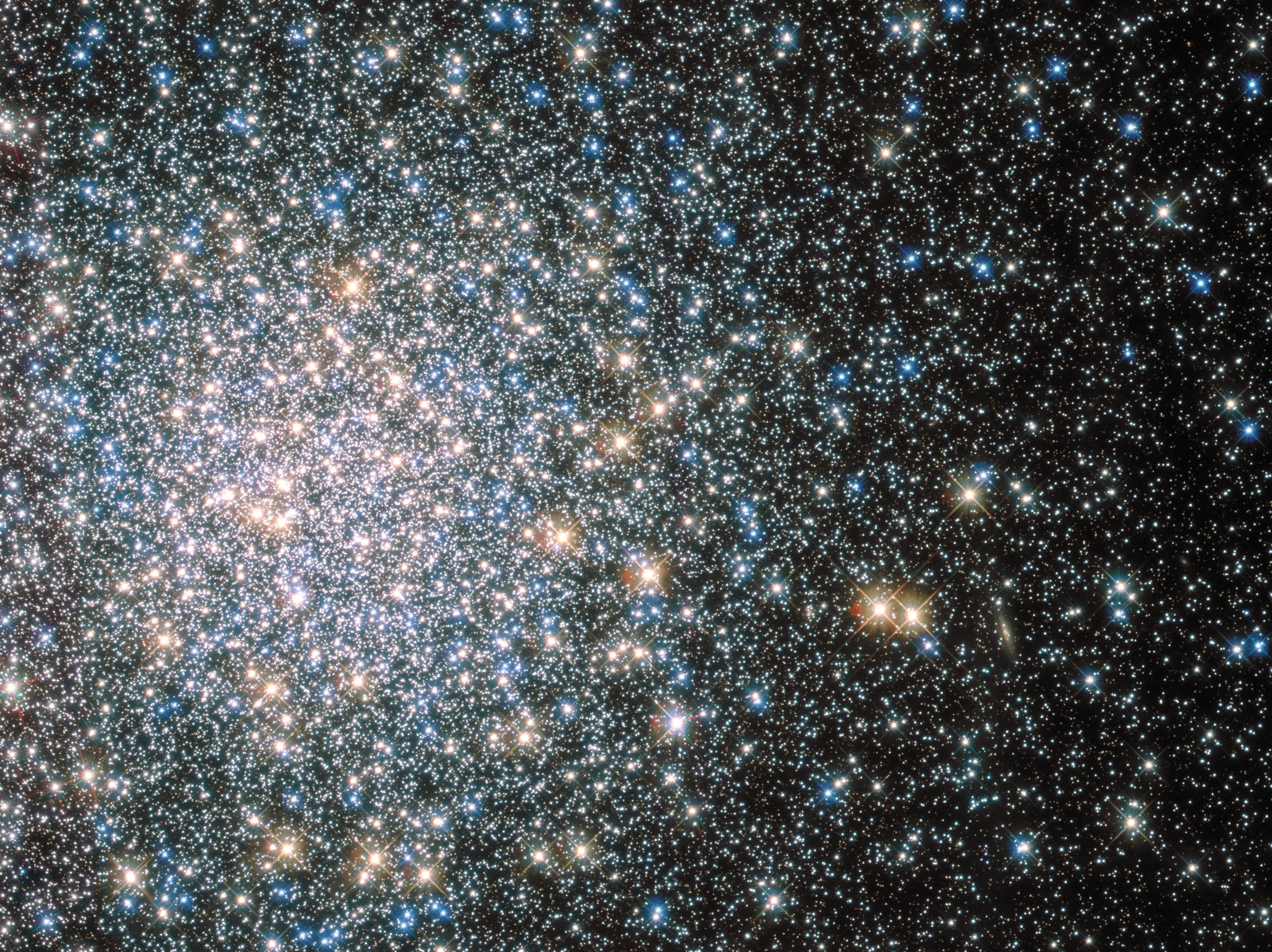
Click here: to donate by Credit Card
Or here: to donate by PayPal
Or by mail to: Free Republic, LLC - PO Box 9771 - Fresno, CA 93794
Thank you very much and God bless you.
Posted on 10/30/2025 11:59:26 AM PDT by MtnClimber
Explanation: "Beautiful Nebula discovered between the Balance [Libra] & the Serpent [Serpens] ..." begins the description of the 5th entry in 18th century astronomer Charles Messier's famous catalog of nebulae and star clusters. Though it appeared to Messier to be fuzzy and round and without stars, Messier 5 (M5) is now known to be a globular star cluster, 100,000 stars or more, bound by gravity and packed into a region around 165 light-years in diameter. It lies some 25,000 light-years away. Roaming the halo of our galaxy, globular star clusters are ancient members of the Milky Way. M5 is one of the oldest globulars, its stars estimated to be nearly 13 billion years old. The beautiful star cluster is a popular target for Earthbound telescopes. Of course, deployed in low Earth orbit on April 25, 1990, the Hubble Space Telescope has also captured its own stunning close-up view that spans about 20 light-years near the central region of M5. Even close to its dense core at the left, the cluster's aging red and blue giant stars and rejuvenated blue stragglers stand out in yellow and blue hues in the sharp color image.

|
Click here: to donate by Credit Card Or here: to donate by PayPal Or by mail to: Free Republic, LLC - PO Box 9771 - Fresno, CA 93794 Thank you very much and God bless you. |
For more detail go to the link and click on the image for a high definition image. You can then move the magnifying glass cursor then click to zoom in and click again to zoom out. When zoomed in you can scan by moving the side bars on the bottom and right side of the image.

🪐 🌟 🌌 🍔
Messier than I expected....

The globular cluster Messier 5 and bright Serpentis below it
The globular cluster is my favorite star formation.
They are very interesting. A planet in there would have a bright night sky.
Wonder what’s the average distance between stars at the core of that cluster.
It’s thought provoking that each one of those stars is like our sun.
I’ve always wondered why those things don’t gravitationally collapse on themselves - and I guess at least to a certain extent they do. If anyone’s interested, check out the simulation video under “Cluster Interactions” at the link below:
https://en.wikipedia.org/wiki/Blue_straggler
From the Wikipedia entry on “globular clusters”:
“The typical distance between stars in a globular cluster is about one light year,[57] but at its core the separation between stars averages about a third of a light year – thirteen times closer than the Sun is to its nearest neighbor,”
One of my favorite Hubble images, for sure. It sure doesn’t look like that in my 4 1/2” refractor, lol.
That is a beautiful image! Did you capture it?
Beautiful!
It kinda reminds of the time when the cap on my salt shaker fell off while salting my corn on the cob.
That was pretty neat. What we normally see are just “snapshots”. The simulation shows us the process in action.
This is what happens when you have a galaxy without a black hole.............
“but at its core the separation between stars averages about a third of a light year”
Wonder if the core stars move about, influenced by the gravitational pull of their neighbors. I haven’t read that those core stars change position over the years, so maybe they’re still too far apart to have much influence on each other.
Or, you might think that those core stars would pull themselves closer together, resulting in some sort of super-star.
Disclaimer: Opinions posted on Free Republic are those of the individual posters and do not necessarily represent the opinion of Free Republic or its management. All materials posted herein are protected by copyright law and the exemption for fair use of copyrighted works.